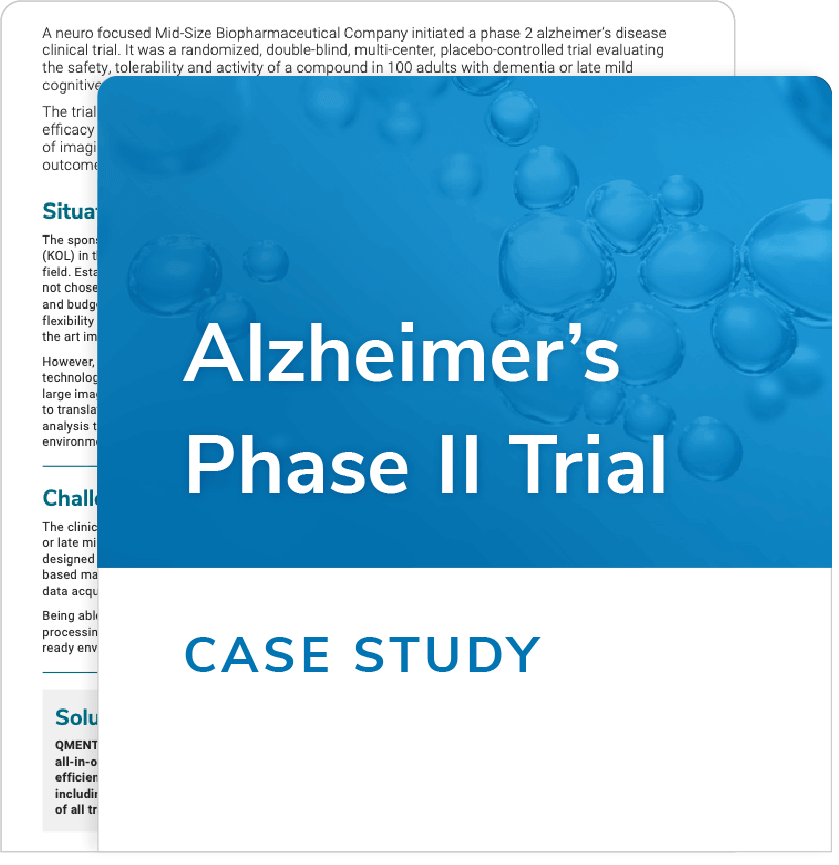Streamlining Medical Imaging to Support Alzheimer’s Disease Phase II Trial
A neuro focused Mid-Size Biopharmaceutical Company initiated a phase 2 alzheimer’s disease clinical trial. It was a randomized, double-blind, multi-center, placebo-controlled trial evaluating the safety, tolerability and activity of a compound in 100 adults with dementia or late mild cognitive impairment (MCI) due to AD, over 6 months of treatment.
The trial was designed to evaluate tolerability in this patient population while also assessing efficacy measures and diverse, disease-relevant markers to allow for evaluation and correlation of imaging-based markers, neurobiological changes, functional measures, and cognitive outcomes in a broad group of people with AD.
Download this case study and learn how to reduce costs by 50%
Situation
The sponsor had identified a Key Opinion Leader (KOL) in the neurology and translational neurology field. Established CROs and Imaging Core Labs were not chosen for the execution of the trial due to agility and budget challenges, as well as the scientific flexibility in supporting the assessment of state-of- the art imaging-based objectives.
However, the KOL and academic CRO’s lacked the technological infrastructure to acquire and manage large imaging study; and lacked the experience
to translate the use of academically developed analysis tools in a highly controlled and regulated environment.
Challenge
The clinical trial evaluated 100 adults with dementia or late mild cognitive impairment (MCI). The trial was designed for the evaluation and correlation of imaging-based markers from large quantities of clinical imaging data acquired across 13 sites. Being able to deploy state-of-the-art, complex, image processing tools in a protected, secure and inspection- ready environment, was of utmost importance.
Solution
QMENTA’s industry leading scientific team and all-in-one software solution was employed to efficiently streamline the imaging workflow, including collection, management, and analysis of all trial’s imaging data.
